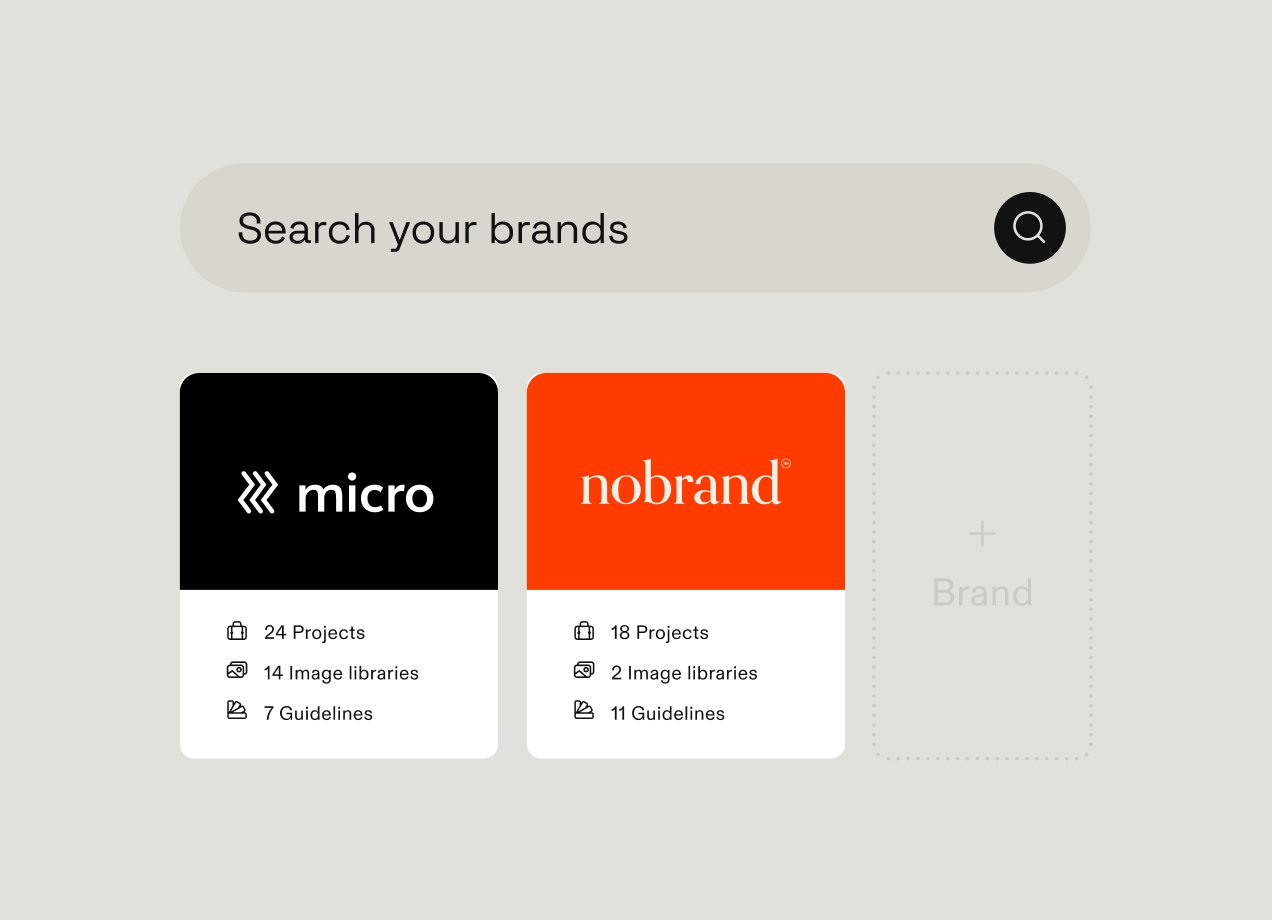Brand management becomes more and more complex as businesses scale and customer expectations evolve. To meet these challenges, brands are turning to comprehensive, cohesive brand systems as a solution.
A brand system is a framework that organizes all your verbal and visual elements into a consistent brand identity across every touchpoint.
In this guide, you’ll learn about the benefits of a brand system and how to create one in five steps. Plus, see how Frontify’s platform can address the challenges of brand management and make it easier for you.
What is a brand system?
A brand system is a collection of tools, processes, and standards that brands use to manage assets and keep content consistent across all touchpoints. Think of the brands you can recognize simply by seeing the logo or hearing a specific message. Like Apple’s or Starbucks’ logos. Or McDonald’s’ tagline, “I’m lovin’ it.” These are examples of effective brand systems at work.
Brand systems include brand guidelines, asset management tools (e.g., a digital asset management (DAM) system), and templates. Together, these elements help define your brand personality, connect with your target audience, and strengthen brand recognition over time.
Say a global electronics company is preparing to launch in 10 markets. Without a brand system, each region might request separate design files or adapt visuals in inconsistent ways. On the other hand, with a strong brand system, every team member in every region knows where to find approved, on-brand assets and exactly how to use them in different contexts and platforms.
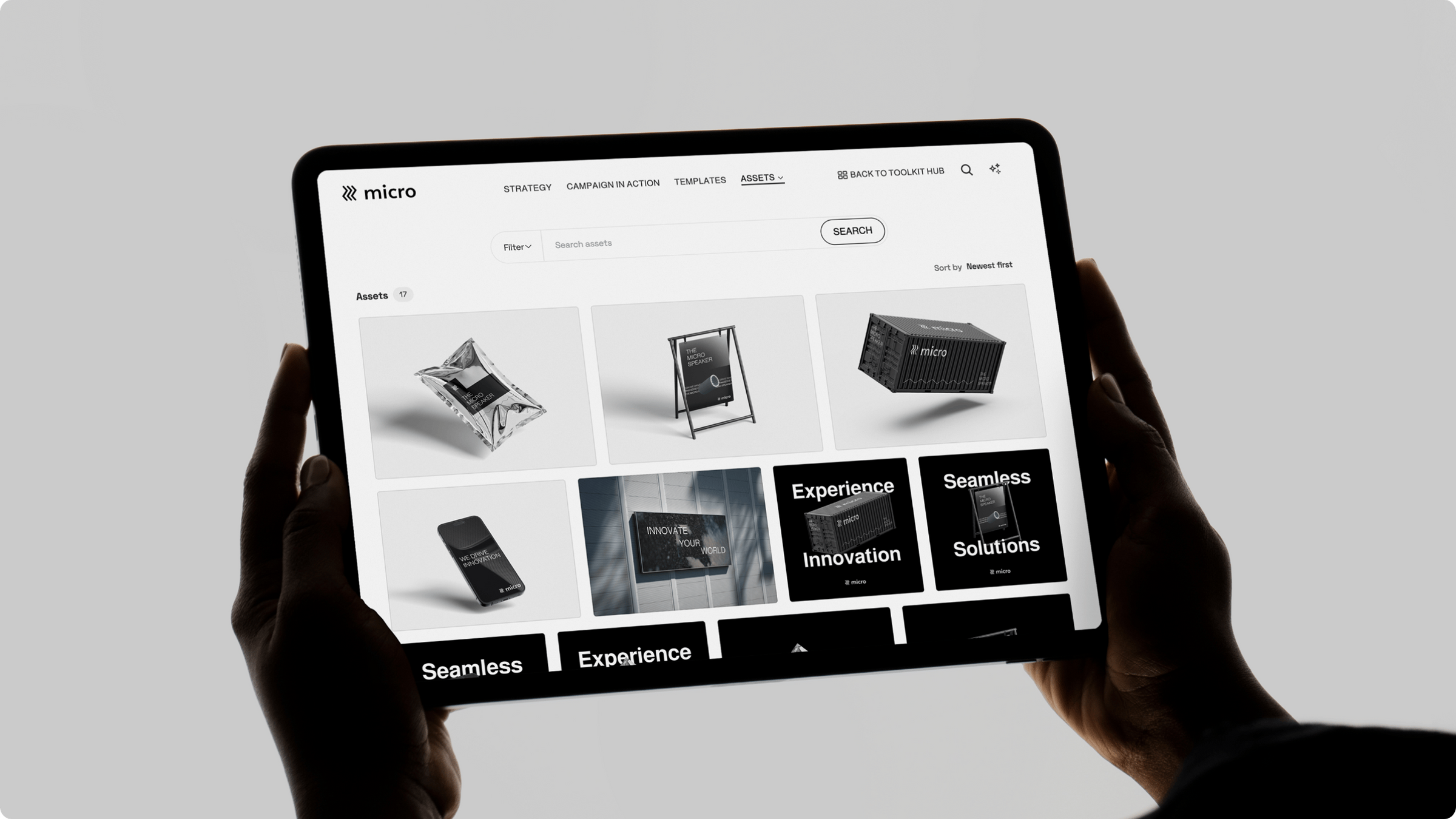
Key features and capabilities of a brand system
Brand systems may vary from company to company depending on needs, but there are a few core features and capabilities that nearly all brand systems have.
Integrated brand guidelines
Brand guidelines are a key element of your brand system. They give design and marketing teams a single reference point for creating on-brand assets and content. Live, interactive guidelines replace static PDFs that can’t be easily updated. Instead, your teams have up-to-date, accessible brand standards.
Including your brand guidelines in your brand system — where everyone can access them and apply them — ensures consistency, no matter who is creating content. There’s no confusion about what design elements to use or how your messaging should sound. Your teams have clarity on everything from logo and color palette usage to template creation.
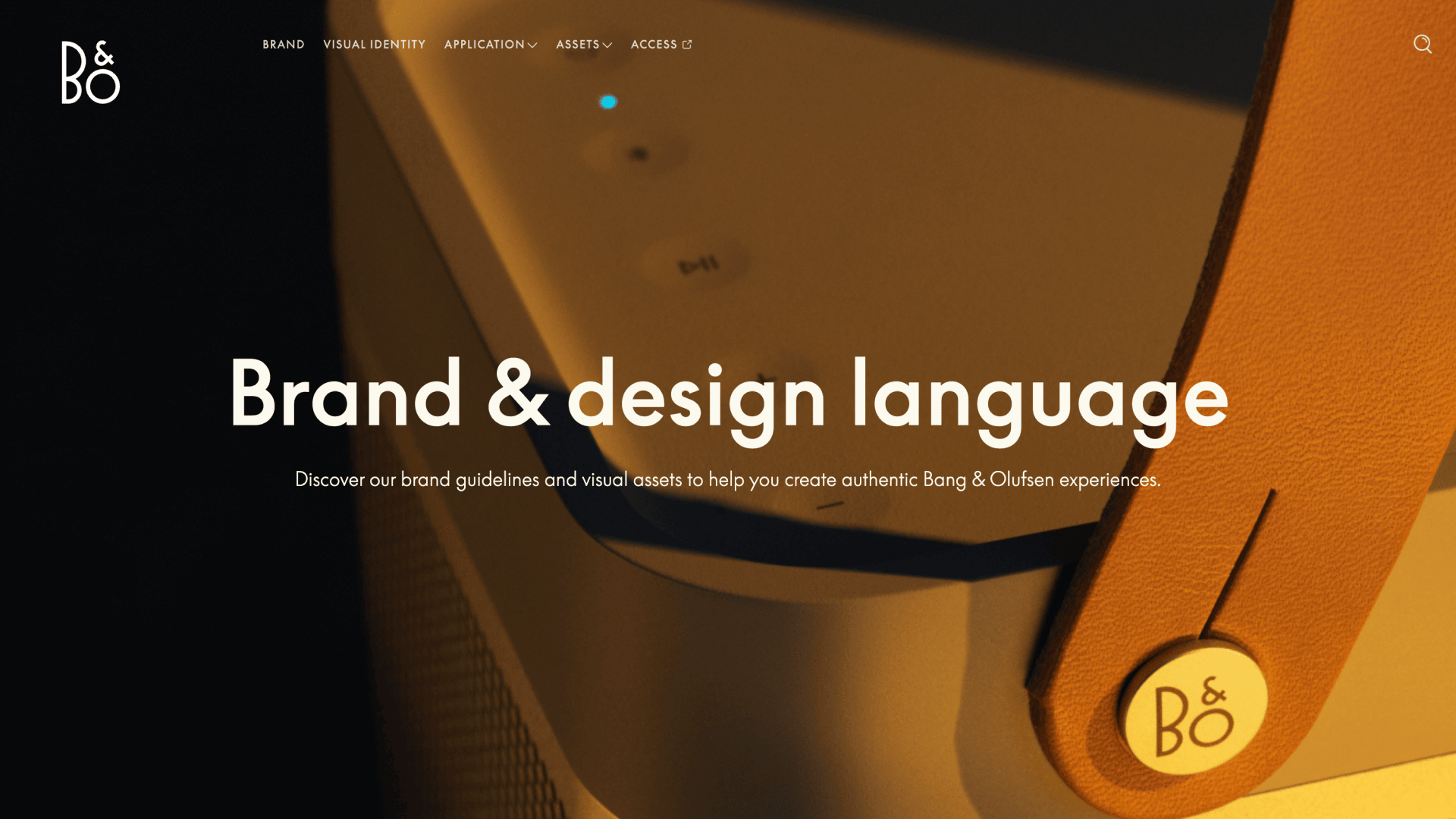
Centralized asset management
A brand system is a single, centralized source of truth where you can store, organize, and retrieve all brand assets efficiently. Many asset management tools (like a modern DAM) have robust tagging and metadata that make it quick and easy to find exactly what you need when you need it.
This ease of use and searchability simplifies the process of finding and using the right assets and eliminates duplicated efforts and other inefficiencies. Your teams won’t have to Slack each other, search through email threads, or use other outdated methods to find what they need.
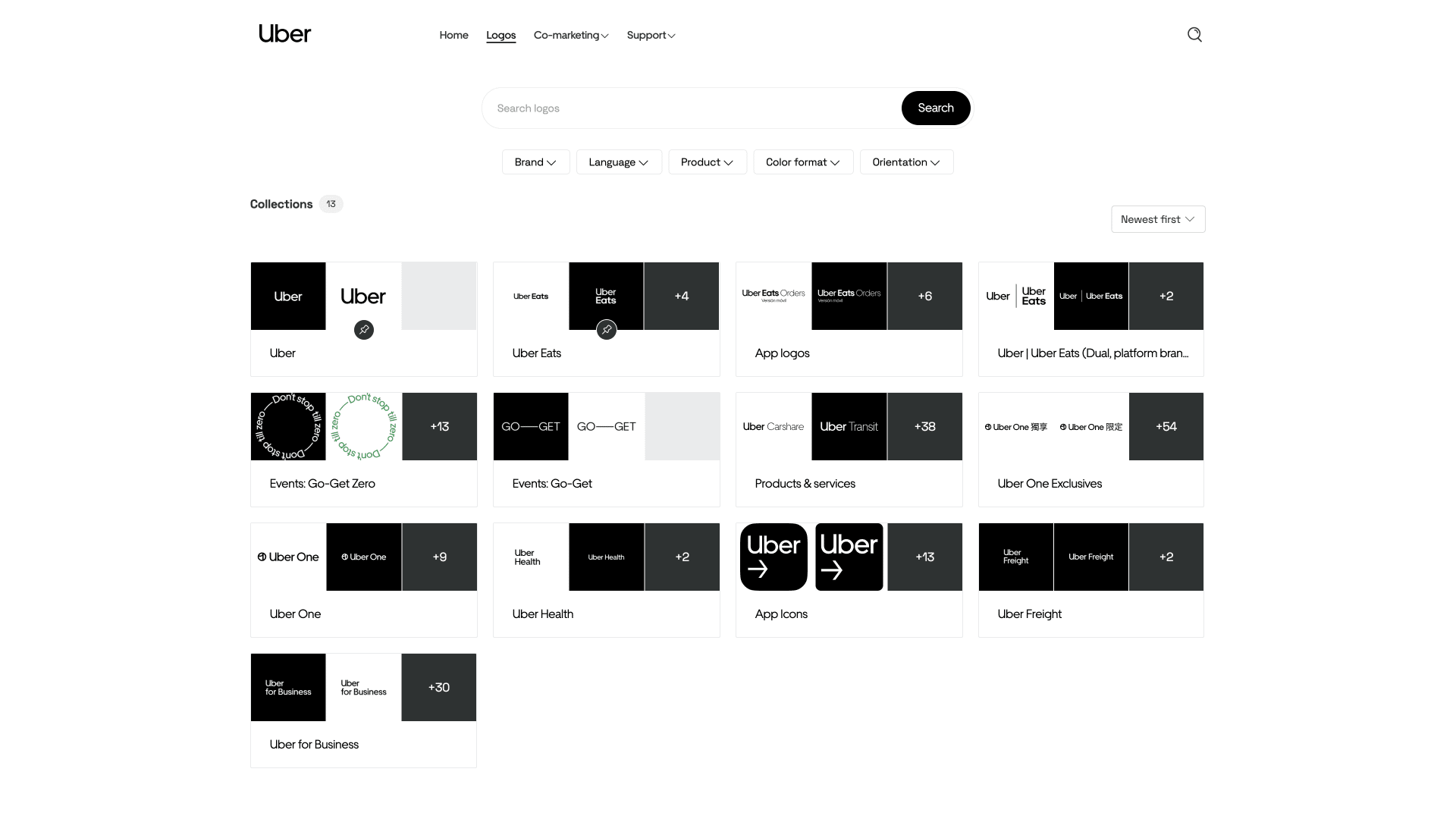
Templates for scalable content creation
Many brands keep their templates in their brand system. Locked templates empower teams to quickly create on-brand content, from social posts to slide decks, without needing graphic design expertise or designer input.
Templates streamline content creation, avoid bottlenecks, and ensure every team produces materials that align with your brand’s standards.
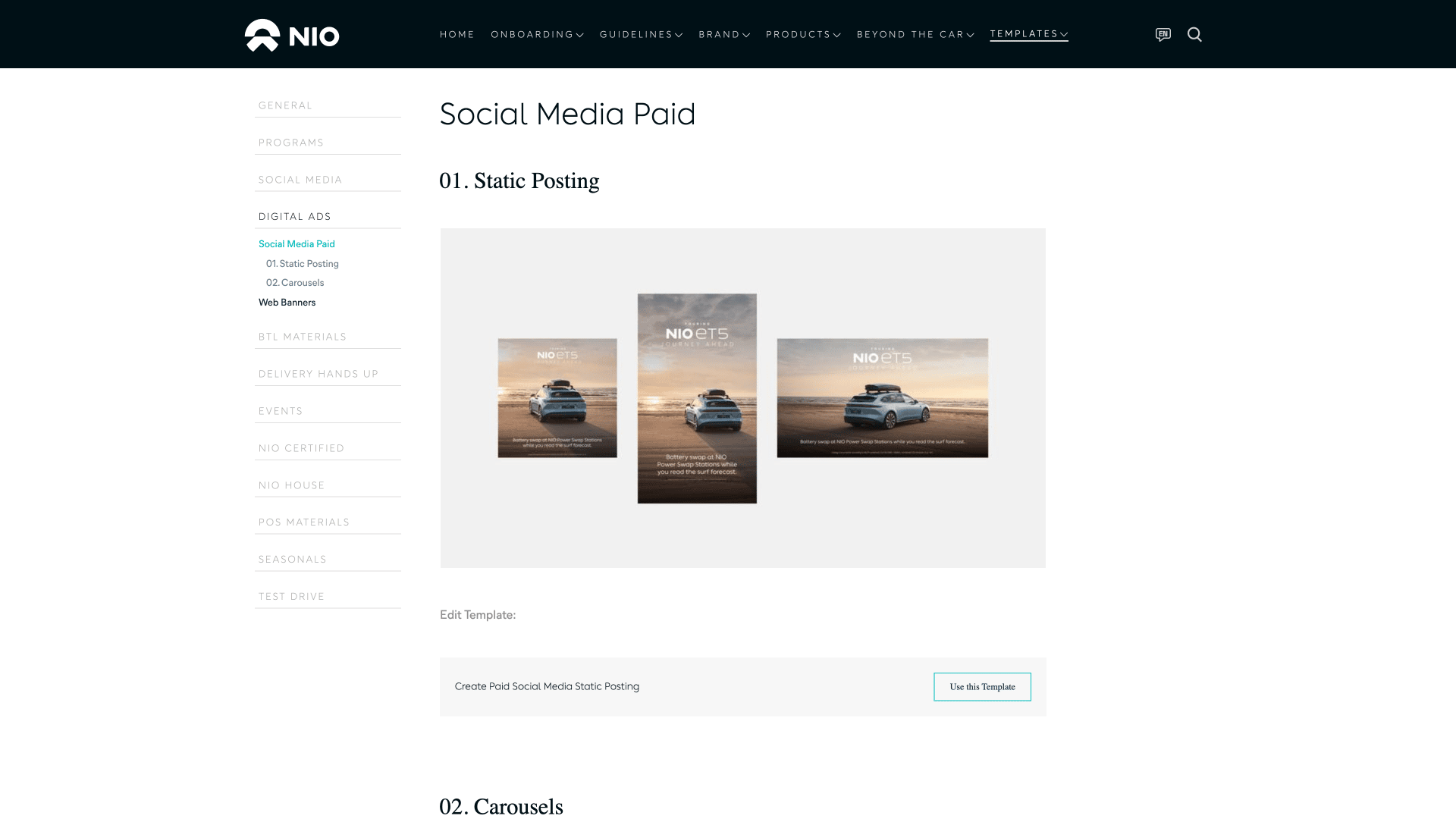
Collaborative workflows
Leading brands have tools in their brand system framework that enable collaborative processes, which include capabilities like real-time feedback, role-based permissions, and approval workflows.
These capabilities improve productivity and reduce the risk of errors or miscommunication. All collaboration can happen in one spot and with clarity. Notifications happen when someone is tagged or when a task is completed, so everyone knows exactly when and how they’re involved in the project.
Benefits of implementing a brand system
A brand system streamlines brand operations. Here’s how:
- Improved efficiency: Teams can find what they need, collaborate faster, and launch campaigns quicker.
- Reduced costs: Minimizes duplicate work, limits off-brand assets, and reduces reliance on designers.
- Brand consistency: Keeps every touchpoint aligned with your brand’s verbal and visual identity.
How to build a brand system in five simple steps
Many brands face brand management challenges like inconsistent branding, workflow inefficiencies, and fragmented storage systems. Enter a robust, well-designed brand system. Use these steps to create or refine your brand system.
1. Define your brand identity
A strong brand identity — with a clear mission, vision, and values — is the foundation of your brand and anchors your brand system, guiding your overall brand strategy. Your brand identity helps you increase consistency and brand equity. For example, Patagonia’s mission, “We’re in business to save our home planet,” informs its product decisions, activist messaging, and visual storytelling. This clarity gives teams a shared understanding and purpose.
To define your brand identity:
- Clarify your mission: Why does your company exist beyond profit?
- Craft your vision: What future are you working to create?
- Document your values: What principles guide decisions and behavior?
- Define your personality and voice: How should your brand sound and feel in communications?
Include your brand identity as part of your brand system, either in your guidelines or as a shared resource, so everyone is aligned to the same foundation.
2. Centralize your brand assets
Gather all your current assets and save them in one central location. Scattered assets make it nearly impossible for your teams to find what they need quickly. Often, scattered assets result in people creating duplicate assets so they don’t spend time finding what they need. This can come at a cost: off-brand assets that sacrifice brand integrity. Centralizing your assets means everyone can find and use them quickly.
These assets include visual assets and messaging:
- Logos and brand marks
- Iconography
- Images and videos
- Typography and fonts
- Brand messaging
- Templates
A DAM system is an efficient way to centralize your assets. DAMs that come equipped with robust metadata and tagging features improve searchability and reduce the time it takes to find an asset.
3. Develop comprehensive brand guidelines
To create guidelines that teams actually use, focus on making them comprehensive, easy to navigate, and always up to date. Include clear rules for visual and verbal identity, including logo usage, typography, and tone of voice.
Many strong brands typically make their brand guidelines dynamic by using digital platforms that evolve as their brand does. Modern platforms support real-time editing, modular content blocks, and interactive elements. This usually entails:
- Hosting guidelines online instead of in PDFs, using platforms like Frontify, which is cloud-based
- Linking to live assets (logos, templates, etc.) so updates apply automatically
- Embedding interactive components like color pickers, type scales, or usage dos and don’ts
- Setting permissions and version control so updates are trackable and only made by approved owners
4. Build scalable templates
Identify your most commonly used content. Then create locked, brand-approved templates that empower teams to produce consistent, on-brand assets quickly. For example, you might create templates for:
- Social media graphics
- One-pagers and product sheets
- PowerPoint or Google Slides presentations
- Email headers and footers
- Event flyers or posters
- Web banners or digital ads
For each template, apply brand fonts, colors, logo placement, spacing, and other key elements to standardize the layout and branding. You can lock these elements into place while still allowing for customization with the text and imagery.
Use a tool like Frontify that supports templating with version control, usage tracking, and role-based access.
5. Implement collaborative workflows
Identify the typical stages for your brand projects (e.g., draft → review → approval → publish). Once you have the workflow established, clearly define who creates, reviews, edits, and approves each piece of content or asset. From there, you can set up role-based permissions to control each role to prevent bottlenecks and protect brand integrity.
Keep all feedback, approvals, and comments within your brand system, not scattered across emails or Slack channels. DAMs like Frontify allow for in-platform commenting, version tracking, and automated notifications. For example, you can set up automated triggers like notifying the next stakeholder when a task is completed. This process reduces delays and keeps the process moving without manual check-ins.
Frontify: the ultimate brand system
Frontify is a cloud-based, modern DAM solution that enables teams to create on-brand content at scale.
Integrated brand guidelines
With Frontify, you can centralize your brand guidelines in secure portals, bringing consistency and clarity to every team. It’s easy to keep your guidelines up to date and easily accessible. No more static, outdated PDFs or version confusion.
“Frontify's platform allows us to create user-friendly brand guidelines that help our global teams access the latest specifications and templates for their daily work.” – Gregor Schilling, Head of Corporate Design at Bosch
You can customize every part of your guidelines, including color palettes, typography, and even code snippets. With interactive content blocks, your guidelines become easier to navigate and more useful for every team.
Digital & print templates
Frontify’s templates give teams flexibility to customize assets for any channel while keeping brand elements locked for consistency. You control what can be edited, from copy to images, so last-minute updates don’t compromise quality.
“We went from getting one template published in three to six weeks to 75 published in a matter of days.” – Connie Bravo, Senior Manager, Marketing Technology and Analytics at Spring Health
Integrated with tools like Figma and InDesign, templates make it easy to produce on-brand materials quickly, cut design costs, and release approved content without waiting on design support.
Collaborative workflows
Frontify’s real-time collaboration and approval features streamline feedback across teams. You can manage user roles, track version history, and speed up review cycles all in one place.
Unlock brand consistency with Frontify
Frontify brings your brand guidelines, assets, and workflows together in one place, making it easier for every team, partner, and market to stay aligned. With everything centralized, you can move faster, cut costs, and protect your brand’s integrity at every touchpoint.
See how Frontify can streamline your brand management. Book a demo today and experience it in action.

